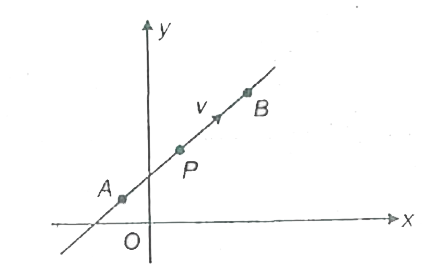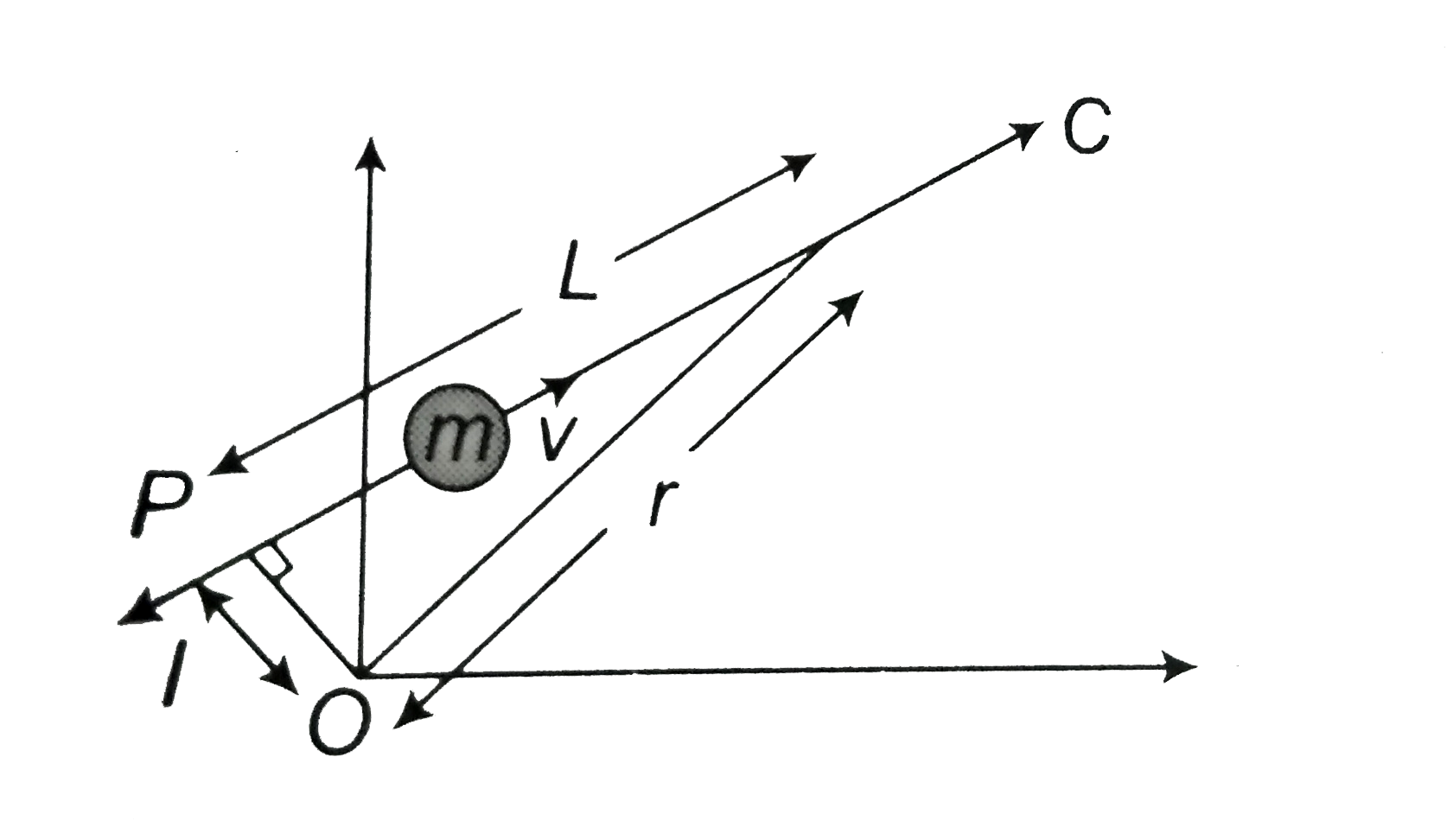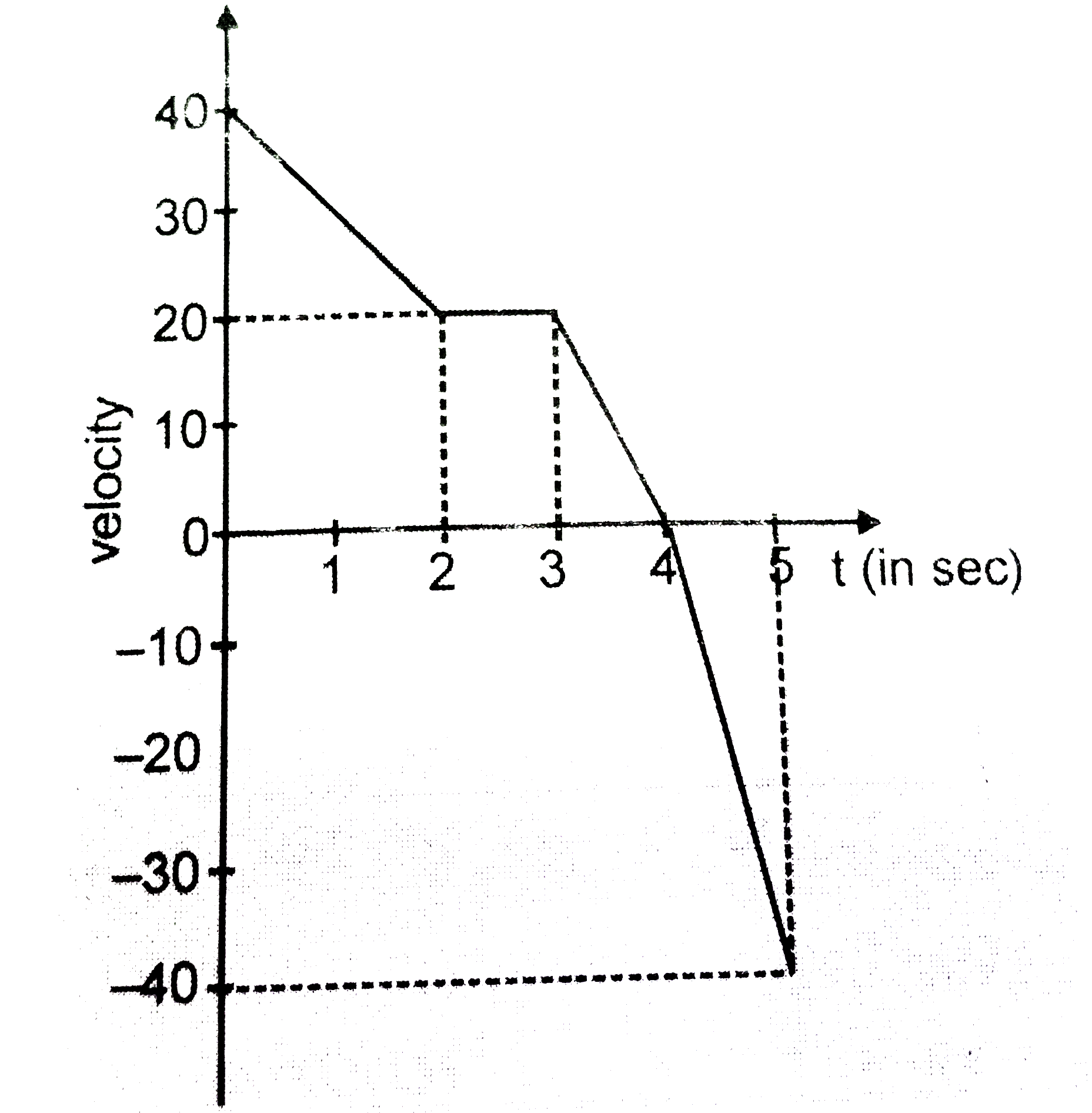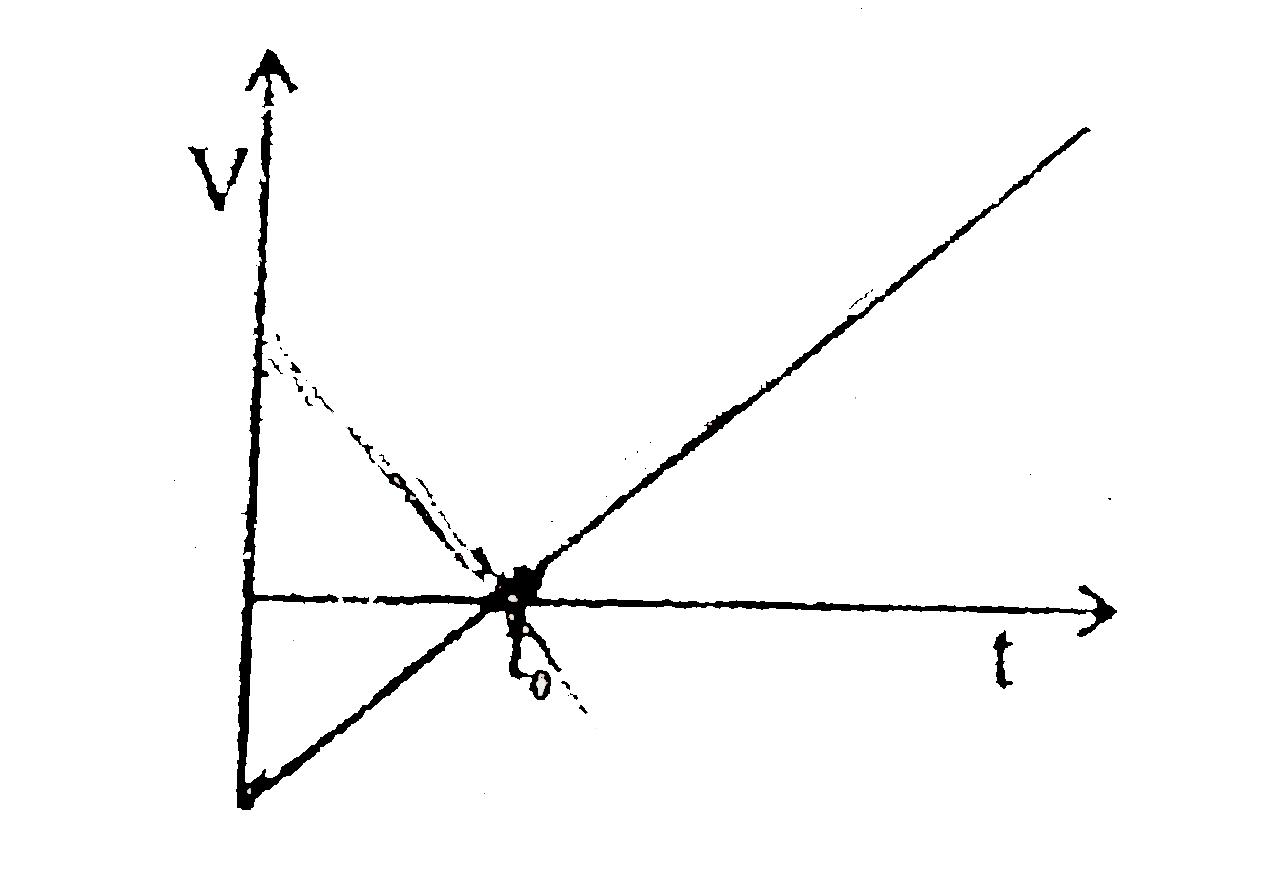A particle starts moving along a straight line path with velocity 10m/s. After 5s the distance of the particle from the starting point is 50m. Which of the following statements about the nature of motion of the particle are correct?
The body may be speeding up with constant positive acceleration.
The motion may be moving with constant velocity.
The body may have constant negative acceleration.
The motion may be first accelerated and then retarded.
The correct Answer is:B, C, D
To analyze the motion of the particle, let's break down the information given in the question step by step.
Step 1: Identify the initial conditions
The particle starts with an initial velocity u=10m/s.
Step 2: Calculate the distance covered
After t=5s, the distance covered by the particle is s=50m.
Step 3: Calculate the average velocity
The average velocity vavg can be calculated using the formula:
vavg=st=50m5s=10m/s
Step 4: Analyze the nature of motion
Since the average velocity over the 5 seconds is equal to the initial velocity, we can conclude that the particle could be moving with constant velocity. However, we need to consider other possibilities as well.
Step 5: Consider acceleration
1. If the particle is moving with constant velocity, it means there is no acceleration (a=0).
2. If the particle is accelerating, it could either be speeding up or slowing down, but still cover the same distance in the given time.
Step 6: Possible scenarios
1. Constant Velocity: The particle moves with a constant velocity of 10m/s for the entire duration.
2. Constant Positive Acceleration: The particle could start at 10m/s and accelerate positively, covering the distance of 50m in 5s.
3. Constant Negative Acceleration: The particle could start at 10m/s and decelerate, but still cover 50m in 5s.
4. Variable Acceleration: The particle could accelerate for a time and then decelerate, still resulting in the same distance.
Conclusion
From the analysis, we can conclude that:
- The particle may be moving with constant velocity.
- The particle may have constant negative acceleration.
- The particle may first accelerate and then decelerate.
Final Statements
The correct statements about the nature of motion of the particle are:
1. The body may be moving with constant velocity.
2. The body may have constant negative acceleration.
3. The body may first accelerate and then decelerate.
---
The particle starts with an initial velocity u=10m/s.
After t=5s, the distance covered by the particle is s=50m.
The average velocity vavg can be calculated using the formula:
vavg=st=50m5s=10m/s
Since the average velocity over the 5 seconds is equal to the initial velocity, we can conclude that the particle could be moving with constant velocity. However, we need to consider other possibilities as well.
1. If the particle is moving with constant velocity, it means there is no acceleration (a=0).
2. If the particle is accelerating, it could either be speeding up or slowing down, but still cover the same distance in the given time.
1. Constant Velocity: The particle moves with a constant velocity of 10m/s for the entire duration.
2. Constant Positive Acceleration: The particle could start at 10m/s and accelerate positively, covering the distance of 50m in 5s.
3. Constant Negative Acceleration: The particle could start at 10m/s and decelerate, but still cover 50m in 5s.
4. Variable Acceleration: The particle could accelerate for a time and then decelerate, still resulting in the same distance.
From the analysis, we can conclude that:
- The particle may be moving with constant velocity.
- The particle may have constant negative acceleration.
- The particle may first accelerate and then decelerate.
The correct statements about the nature of motion of the particle are:
1. The body may be moving with constant velocity.
2. The body may have constant negative acceleration.
3. The body may first accelerate and then decelerate.
Topper's Solved these Questions
- BOOK - CENGAGE PHYSICS ENGLISHCHAPTER - MISCELLANEOUS KINEMATICSEXERCISE - Linked Comprehension Type35videos
MISCELLANEOUS KINEMATICS
- BOOK - CENGAGE PHYSICS ENGLISHCHAPTER - MISCELLANEOUS KINEMATICSEXERCISE - Integer Type17videos
MISCELLANEOUS KINEMATICS
- BOOK - CENGAGE PHYSICS ENGLISHCHAPTER - MISCELLANEOUS KINEMATICSEXERCISE - Interger type3videos
MISCELLANEOUS KINEMATICS
- BOOK - CENGAGE PHYSICS ENGLISHCHAPTER - LINEAR AND ANGULAR SIMPLE HARMONIC MOTIONEXERCISE - Single correct anwer type14videos
LINEAR AND ANGULAR SIMPLE HARMONIC MOTION
- BOOK - CENGAGE PHYSICS ENGLISHCHAPTER - MISCELLANEOUS VOLUME 2EXERCISE - INTEGER_TYPE10videos
MISCELLANEOUS VOLUME 2
Similar Questions
A particle is constrained to move on a straight line path. It returns to the starting point after 10 sec . The total distance covered by the particle during this time is 30 m . Which of the following statements about the motion of the particle is false
View SolutionA particle P is moving along a straight line as shown in the figure. During the motion of the particle from A to B the angular momentum of the particle about O
 View Solution
View Solution
Knowledge Check
- Question 1 - Select One
Which of the following statements is not correct regarding the motion of a particle in a straight line?
Ax-t graph is a parabola, if motion is uniformly accelerated.Bv-t is a straight line inclined to the time-axis, if motion is uniformly accelerated.Cx-t graph is a straight line inclined to the time axis if motion is uniform and acceleration is zero.Dv-t graph is a parabola if motion is uniform and acceleration is zero.
A particle of mass m moves along line PC with velocity v as shown. What is the angular momentum of the particle about O?
 View Solution
View SolutionA particle starts motion from rest and moves along a straight line. Its velocity-time graph is shown. Find out speed of particle at t=2s and at t=3s.
 View Solution
View SolutionA particle, initially at rest, starts moving in a straight line with an acceleration a=6t+4m/s2. The distance covered by it in 3 s is
View SolutionFigure shows velocity time graph of a particle moving in straight line. Which of the following statement(s) is / are CORRECT:−
 View Solution
View SolutionA particle is moving along a circle of radius 20cm, with a linear velocity of 2m//s. Calculate the angular velocity of the particle.
View SolutionA particle is moving along a circle of radius 20cm, with a linear velocity of 2m//s. Calculate the angular velocity of the particle.
View SolutionA particle moving along a straight line with uniform acceleration has velocities 7m/s at A and 17m/s at C. B is the mid point of AC. Then :-
View Solution

